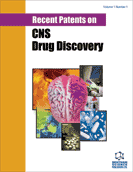Abstract
Rich evidence has shown that cannabis products exert a broad gamut of effects on emotional regulation. The main psychoactive ingredient of hemp, Δ9-tetrahydrocannabinol (THC), and its synthetic cannabinoid analogs have been reported to either attenuate or exacerbate anxiety and fear-related behaviors in humans and experimental animals. The heterogeneity of cannabis-induced psychological outcomes reflects a complex network of molecular interactions between the key neurobiological substrates of anxiety and fear and the endogenous cannabinoid system, mainly consisting of the arachidonic acid derivatives anandamide and 2-arachidonoylglycerol (2-AG) and two receptors, respectively termed CB1 and CB2. The high degree of interindividual variability in the responses to cannabis is contributed by a wide spectrum of factors, including genetic and environmental determinants, as well as differences in the relative concentrations of THC and other alkaloids (such as cannabidiol) within the plant itself. The present article reviews the currently available knowledge on the herbal, synthetic and endogenous cannabinoids with respect to the modulation of anxiety responses, and highlights the challenges that should be overcome to harness the therapeutic potential of some of these compounds, all the while limiting the side effects associated with cannabis consumption. In addition the article presents some promising patents on cannabinoid-related agents.
Keywords: Anxiety, cannabis, CB receptors, cannabidiol, endocannabinoids, Δ9-tetrahydrocannabinol, EFFECTS OF CANNABIS, Endocannabinoid Transport Blockers, FAAH Inhibitors, MAGL Inhibitors
 54
54

